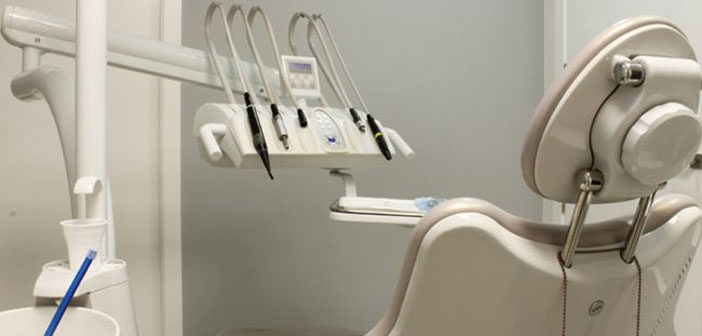AS UK dental professionals, our goal is always to deliver exceptional dental care to our patients. Yet, even as we leverage modern technologies and sophisticated dental equipment, there is always room for improvement.
This post will explore how we can enhance our dental practices by adhering to the latest best practices, optimising the use of our instruments, and adopting a holistic approach towards patient care. Let’s keep our handpieces at the ready and embark on this journey together.
Optimising the Use of Dentist Equipment
Dental technology is advancing rapidly, and keeping abreast of these developments is crucial. Modern dentist equipment like digital X-ray machines, intraoral cameras, laser dentistry devices, and state-of-the-art handpieces are transforming the way we conduct dental procedures.
To truly optimise these resources, we should focus on training and skill development. Regular workshops or online courses can keep us updated about new technologies and techniques. For example, the adept use of advanced handpieces can significantly improve the efficiency of procedures like root canals and fillings, enhancing the patient experience and overall outcomes.
Instrument Hygiene: A Priority
Infection control is a fundamental aspect of any dental practice. It’s crucial to adhere to the highest standards of hygiene, particularly concerning the sterilisation of our instruments. We must ensure that our sterilisation procedures align with UK regulatory standards, employing sterilisation indicators for every cycle. Remember, instrument hygiene directly affects the health of our patients, and hence, the reputation of our practice.
Embrace the Advantages of Digital Dentistry
Digital dentistry brings numerous advantages, from greater accuracy in diagnoses to improved patient comfort. Technologies like CAD/CAM are revolutionising the creation of dental prosthetics, while digital imaging provides superior diagnostic insights.
But it’s not just about the physical dentist equipment. The rise of practice management software can improve appointment scheduling, patient communication, and record keeping. Utilising these systems to their fullest potential can dramatically enhance our practice’s efficiency and the patient’s overall experience.
Communication: The Cornerstone of Exceptional Dental Care
Let’s not forget that our patients are at the heart of our practices. We can use the most advanced dental equipment and adopt the most sophisticated procedures, but without effective communication, our efforts can be in vain. A comprehensive care approach involves explaining procedures clearly, reassuring patients about the safety of the instruments and handpieces we use, and discussing potential treatment options.
Moreover, it involves listening – truly listening – to our patients. Understanding their fears, expectations, and experiences can help us deliver more empathetic and tailored dental care.
An Emphasis on Preventative Care
A significant part of enhancing our dental practices involves shifting our focus towards preventative care. This means educating patients on oral hygiene practices and the importance of regular check-ups. Early detection of dental problems can save our patients from a lot of pain and expenses.
Preventative care isn’t just about patient education. It also encompasses a proactive approach from us. Regular training can ensure we are equipped to spot the earliest signs of dental issues, whether it’s using a dental microscope or conducting oral cancer screenings.
Harnessing the Power of Data
As we continue to evolve in our practices, the effective utilisation of data becomes increasingly important. Patient data, when managed well, can provide unique insights into treatment patterns and effectiveness. Moreover, it can help identify high-risk groups within our patient base and allow us to personalise our care more efficiently.
There are now software applications and analytical tools specifically designed for dental practices that can assist us in interpreting this data. They can help us track our treatment outcomes, patient satisfaction, and even the lifespan of our instruments and dental equipment. By embracing these data-driven tools, we can make more informed decisions about patient care and our practice management.
The Role of Patient Comfort in Dental Care
Last, but certainly not least, we must emphasise patient comfort in our practices. Many patients experience anxiety about dental procedures, often due to a fear of pain or the unfamiliar sounds of handpieces and other dentist equipment. As dental professionals, it is our responsibility to address these fears and ensure our patients have as comfortable and positive an experience as possible.
This could mean investing in equipment designed to increase patient comfort, like ergonomic dental chairs or noise-cancelling headphones for patients to wear during procedures. It could also mean training ourselves and our staff in techniques for easing patient anxiety. From the moment a patient steps into our practice, we should be doing everything we can to make them feel safe, understood, and cared for. This focus on patient comfort can truly set our practice apart and establish us as leaders in the field of dental care.
Conclusion: Towards Better Dental Practices
Improving our dental care isn’t a one-off task, but a continuous process. As we adapt to new technologies and better understand our patients’ needs, we can provide even more exceptional care. Let’s not view our dentist equipment and instruments merely as aids but as partners in delivering optimal dental care. And remember, it’s not just the sophistication of our handpieces and other instruments that define us, but our commitment to our patients’ health and comfort.
In this journey towards improvement, let’s not forget the value of community. Sharing knowledge and experiences with other dental professionals can bring invaluable insights and enhance our collective services. Let’s strive for excellence, not just individually, but as a profession, ensuring a brighter, healthier dental future for all our patients.




